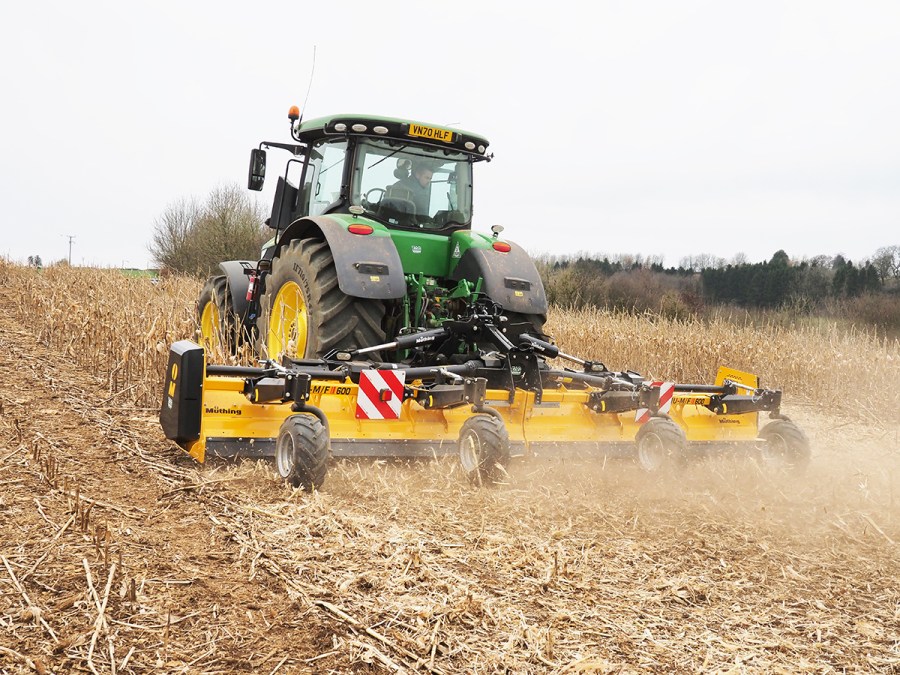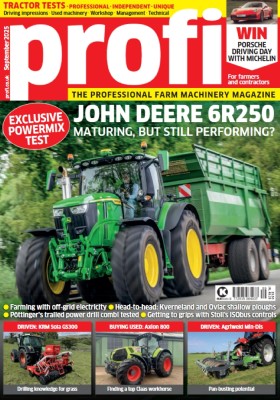With the ongoing uncertainty concerning farm support and thus cropping plans,
machinery investment involves some tricky decisions over which equipment will remain cost
effective over its lifetime. A Müthing MU-M 600/F Vario flail mower is an impressive addition
to the fleet this spring for one Gloucestershire business.
KEEPING IT BRIEF
- Diversified estate with flexible approach to machinery
- Heavy duty flail mower with large working widths tackles a number of jobs
- Contracting opportunities always a consideration for purchases
Coombe End Farms is part of a diverse estate near Cheltenham, Gloucestershire, with enterprises including a 6000 tonne commercial grain store and Elkstone Studios, a new office park which offers the leisure facilities to make it a weekend destination too.
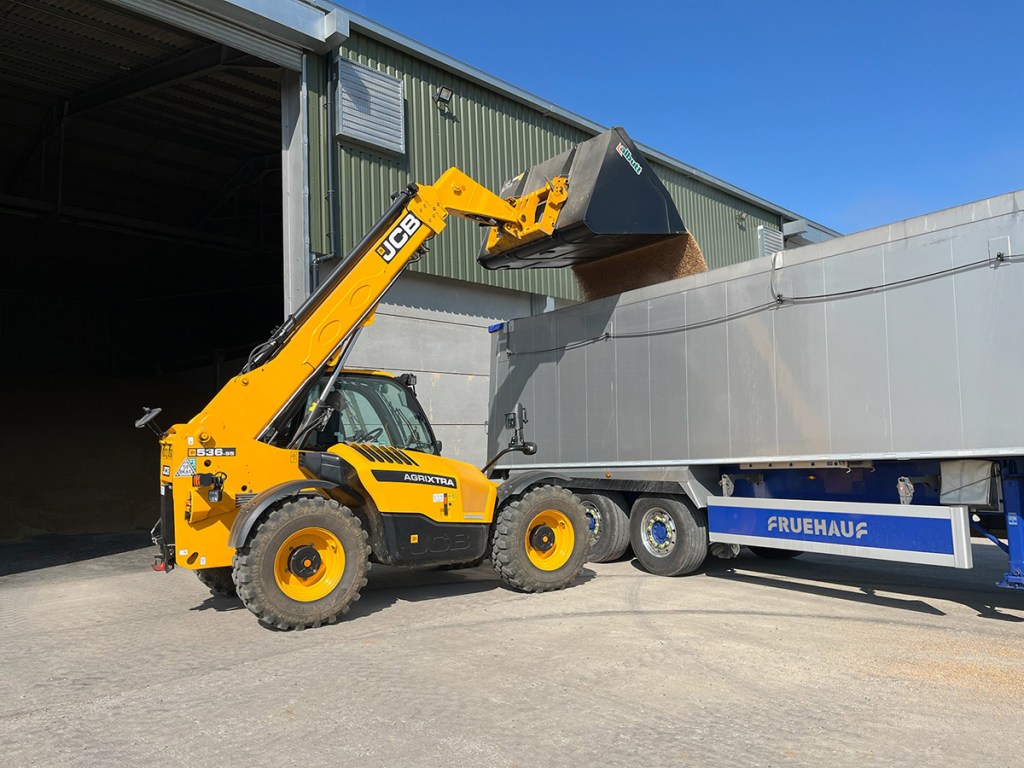
The office park was built on the old farm site, so farming operations and the grain store have transferred to the former dairy 300m up the road.
The 800ha estate has 450ha of combinable crops in hand, plus 160ha of land in SFI agreements. Contracting is an important strand of the business, on another 650ha, with all arable services offered. It is run by a small team of farm manager Martyn Thorn and operator Ben Harris, with help coming from Chris Thorn and Kevin Bullock as the season becomes busier, working closely with the owner and estate manager.
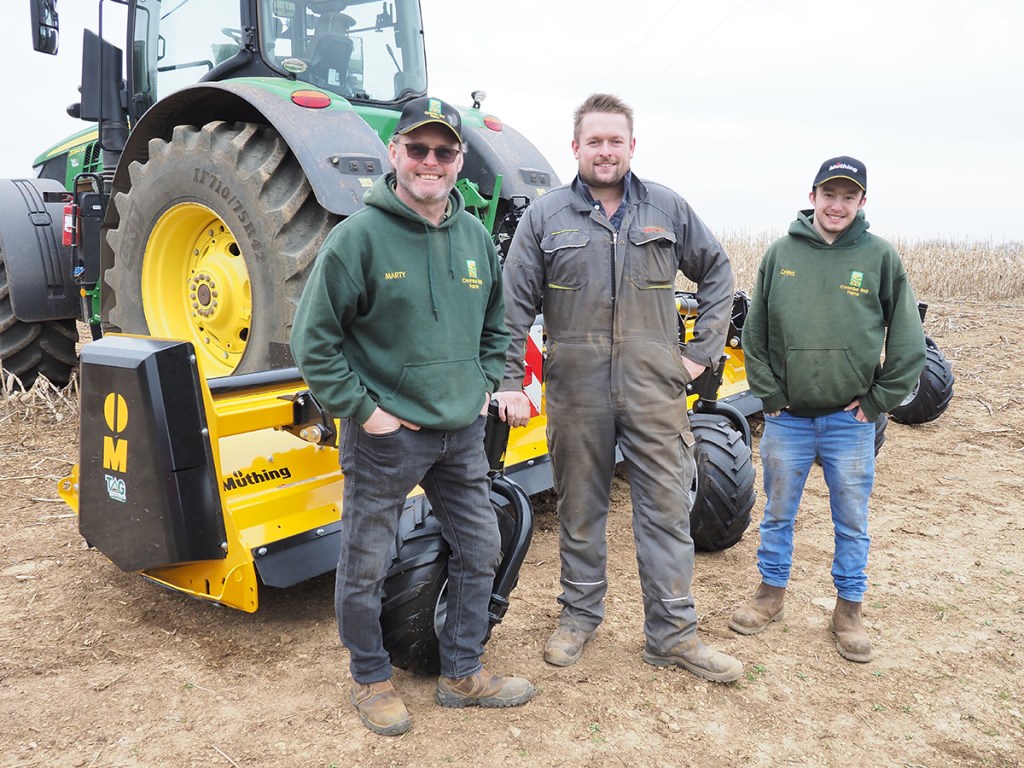
“We can see an increasing demand for agricultural contracting and environmental work in the future, and a proportion of our machinery and labour is deployed for maintenance on the wider estate,” points out Martyn. “The income from the office park supports the farm, replacing that from the Basic Payment Scheme, and allows future investment.”
Recent estate projects include planting 1.8km of new hedge using capital grants.
Decisions, decisions
The newest purchase took a considerable amount of thought for a ‘humble rough mower’. It’s an oft-forgotten and neglected item of kit, but with large areas of game cover to mulch and amenity grassland and environmental areas to maintain, getting the right machine was key for Martyn.
“We had a wide area batwing rotary mower, but its poor performance led us to look at alternatives,” he explains. “The tractor wheels pushed down the maize stalks in their path and the deck didn’t create enough updraft to deliver them to the blades, so the final result was disappointing.”
There was already a 2.00m flail on the farm, used for smaller areas of rough mowing, but Martin was keen to have a higher capacity solution and they ended up with a Müthing MU-M 600/F Vario. It’s 6.00m working width is made up of a pair of 3.00m pto-driven flail mower beds which fold to 2.85m for transport. A single gearbox transmits power to a V-belt which drives the large diameter rotor, which is fitted with 52 hammer flails.
The trough is especially deep to increase the suction generated within and to lift crops run down by the tractor. It is steel lined and uses an adjustable mulching bar which can be moved closer to or further away from the flails to alter the intensity of mulching by loosening retaining screws and repositioning it as required.
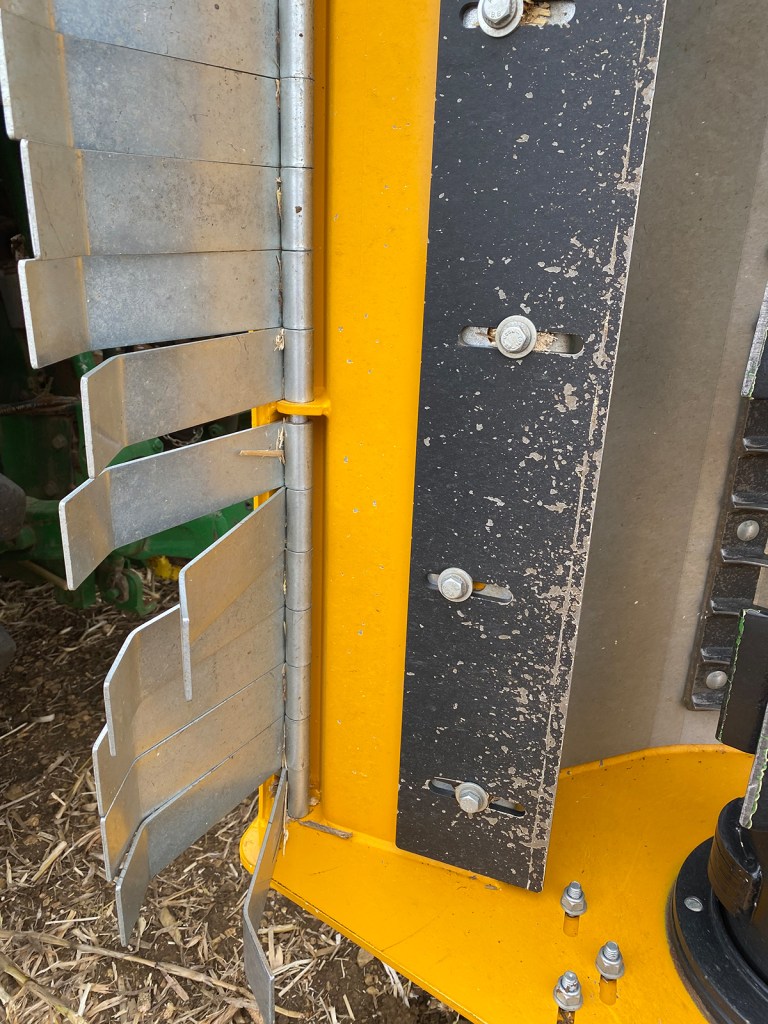
Another feature of the design is a patented shark fin shredding bar which is located in the top of the trough, guiding the material towards the flails.
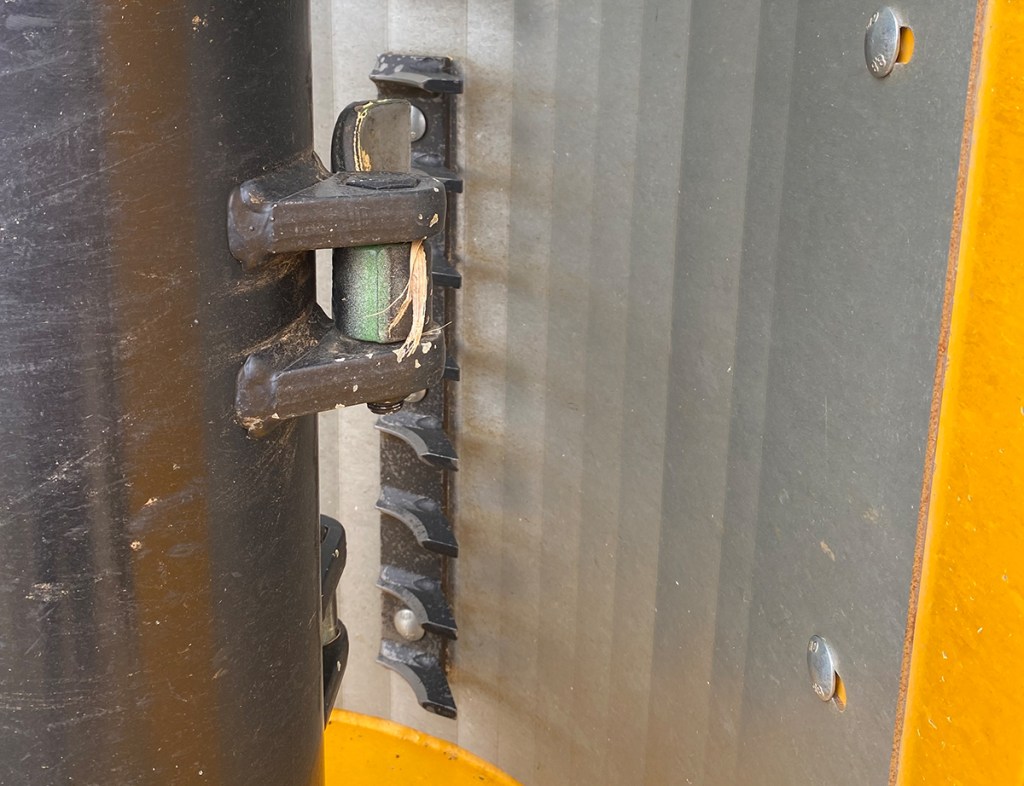
An option on these machines is a hydraulically driven additional flail unit which sits between the two beds to ensure that material in the centre of them is not missed. After a site visit from Müthing importer Simon Richard, to help get the best from the mower, this has been retrofitted to Coombe End Farms’ machine.
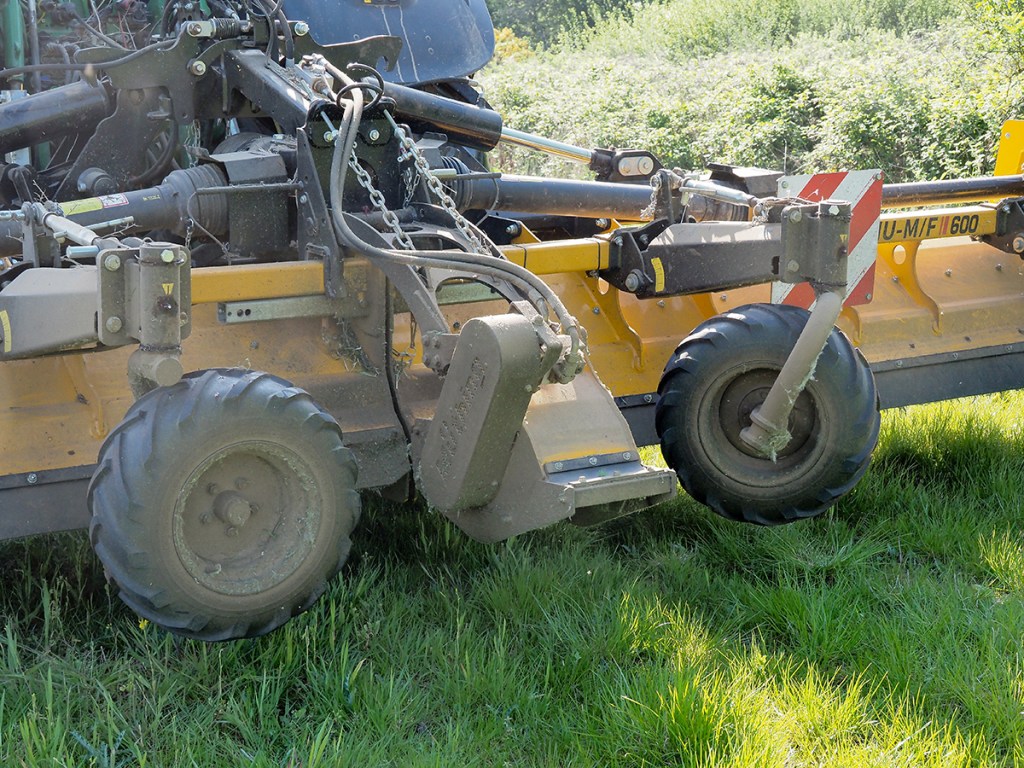
Stone guards front and rear prevent debris being thrown out and skids at each end offer protection for the beds on uneven ground. It can be specified with four castoring wheels at the rear rather than a roller, and Martyn notes that unlike another brand that he looked at, the wheels turn through 360 degrees, allowing a complete headland turn without lifting the mower.
“We did look at a few designs of flail mowers – I didn’t want a rear roller as it will be used in winter, when the damper soils can lead to mud accumulating on the roller and blocking up. Another challenge is that we need to be able cut grass banks, so rear wheels allow the mower to trail behind the tractor on turns for safety rather than having to lift it.”
Adjusting the tractor top linkage so that the mower sits back and opens up the throat ensures that taller stems are taken in when mulching the maize cover, which is carried out in the spring ready for ploughing and redrilling. It can also be put into float to further aid with contour following.
“The Müthing mulches most of the stems on the first pass; turning round and going over a second time gives a complete fine chop,” comments operator, Ben Harris. “Where maize has grown well it tends to blow over and can be difficult to mulch, but now we have a solution.”
Wild bird mix that had died back before it could be mown this year was no match for the flail mower, but Martyn explains that in a dryer spring it would be tackled earlier. He’s also exploring the possibility of using it for scrub clearance. On amenity grassland, the shredding action has produced a fine, almost lawn-like finish, he notes.
Ben comments: “We used it on some cover that had gone flat after being topped – the hood just ‘suctioned it up’ so that it could be cut. I’m confident that we can get to within a couple of inches of the ground when we need to. We’ve already found that residues that have been shredded with the Müthing are much easier to incorporate, making for better cultivations.”
Martyn adding: “We have clients who have established AB15 that needs to be regularly maintained; the Müthing will go low enough to do this so it gives us more options for contract work.”
He comments that the 6.00m machine makes a neat package when folded; it also comes complete with parking legs so can be quickly dropped off in the workshop.
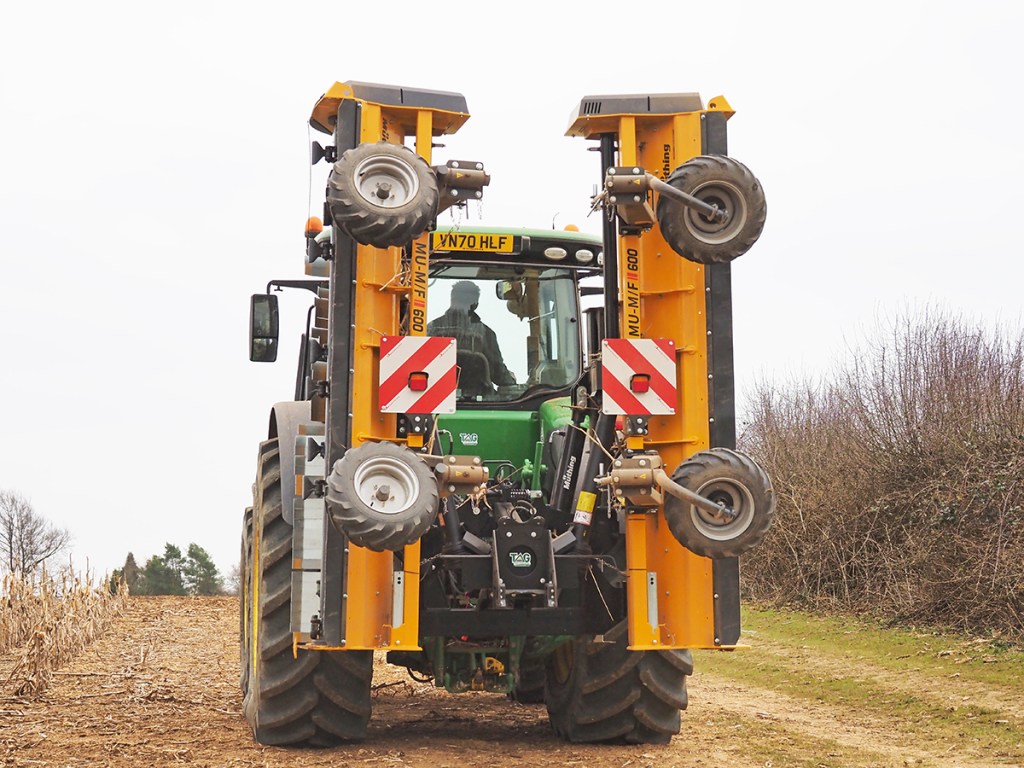
Adapting to the workload
In addition to the acreage in-hand, stubble to stubble contracting work is carried out on an acreage charge basis and Martyn explains:
“The day you put the seed in the ground is the most important day of that crop’s life. If you don’t get that right you’re always on the back foot, so we do what is required. If that is a cheaper way, then great, if not then I am not afraid to get the plough and combination drill out.”
Rotation is oilseed rape followed by first wheat and a second cereal of either feed or malting barley. SFI options brought in buckwheat as a companion crop to oilseed rape; a green cover is established between harvest and spring barley.
“We make SFI work to our advantage within the rotation, or to manage corners, stony areas, banks or springs.”
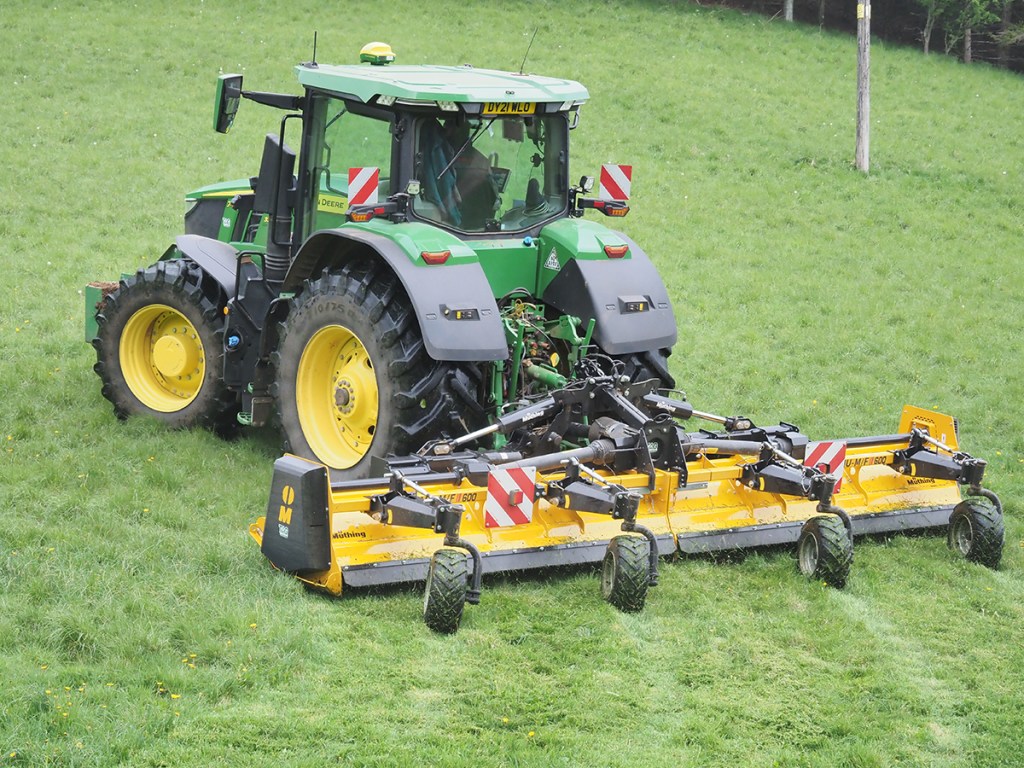
Manure plays a role for oilseed rape – either biosolids, mushroom compost or chicken litter improve soil health and tackle flea beetle, he comments.
A Horsch Terrano is fitted with a range of points to do different jobs, from creating a stale seedbed to establishing rape or cover crops when fitted with a Biodrill.
“We’ve also put winged points on and used it to hoe weeds for an organic farmer,” Martyn comments. “We direct drill better land with our Horsch Sprinter with 1in or 5in Dutch openers and we direct drill all spring barley.”
The Sprinter has a twin hopper and additional mini hopper for slug pellets.
“This model is fitted with a full width front packer and the 22 coulters contour well; discs on the back row also help to keep soil in front of the coulter,” explains Martyn. “It’s an improvement on its predecessor on which we had to retrofit a ring packer. We can also put urea down the spout to give spring barley a boost; we don’t find it spins out well to 30m and this also helps reduce volatilisation.”
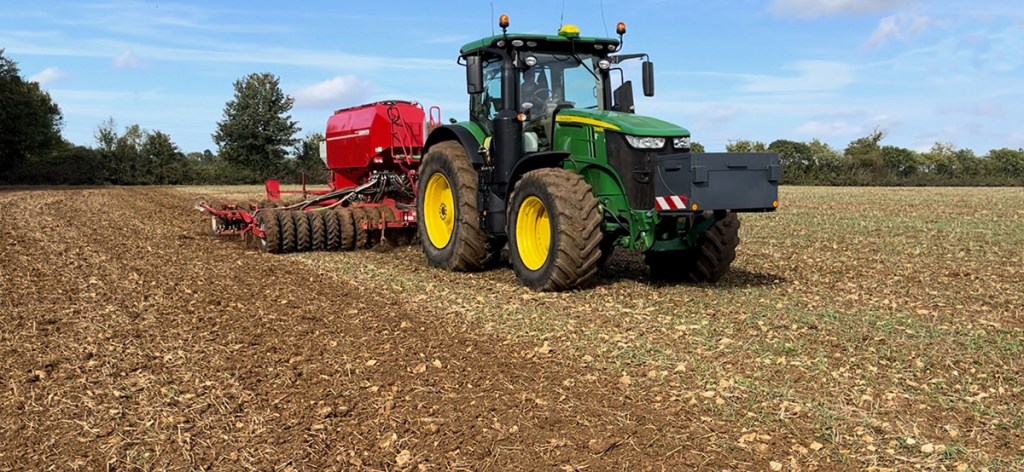
He concedes that the Sprinter is best suited to dry conditions, and common with many farms, the business found itself shopping for a power harrow drill in 2019’s deluge.
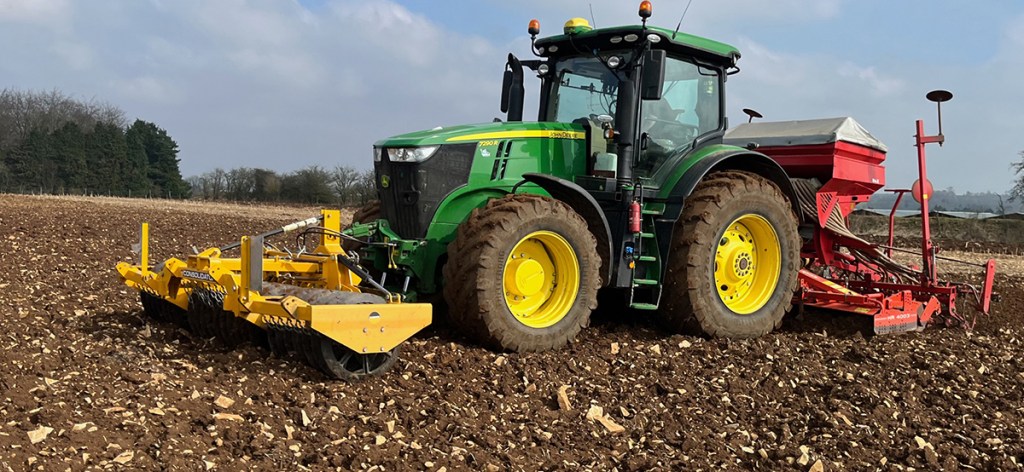
“It was an Accord on a Kuhn power harrow, and we’ve just updated it to a 4.00m Kuhn Venta which has three rows of tines for better trash flow. No two years are the same and we have variability of soils within the same field, so we need that flexibility. It can go in without ploughing in some conditions, but we have got a Kverneland on-land Vari-Width in the armoury if needed.”
Crop nutrition options
Fertiliser is divided between a Kuhn Axis and liquids through a 4,000-litre Bateman RB35.
“We work closely with our independent agronomist, Mike Dolman and the Crop Advisory Buying Group and use Rhiza Contour to produce VR maps that can downloaded into the JD system; we’ll install a concrete pad for Yara tanks for our contract clients so that it’s there when we need it.’
The RB35, which comes with VG booms, the company’s boom levelling and Capstan PWM was purchased via a shrewd deal which saw it replace a well-cared for simpler Bateman, chopping a good chunk off the price of the new machine.
“Bateman claims 8% savings on chemicals in the first year, and we’ve been impressed with results of the shut-off on fertiliser too – there’s less lodging. The way it turns on and off the nozzles makes life as an operator easier and less tiring. Downtime is reduced with a 10,000-litre bowser.”
The combine was another recent link in the chain, marking a return to New Holland for the estate after 20 years.
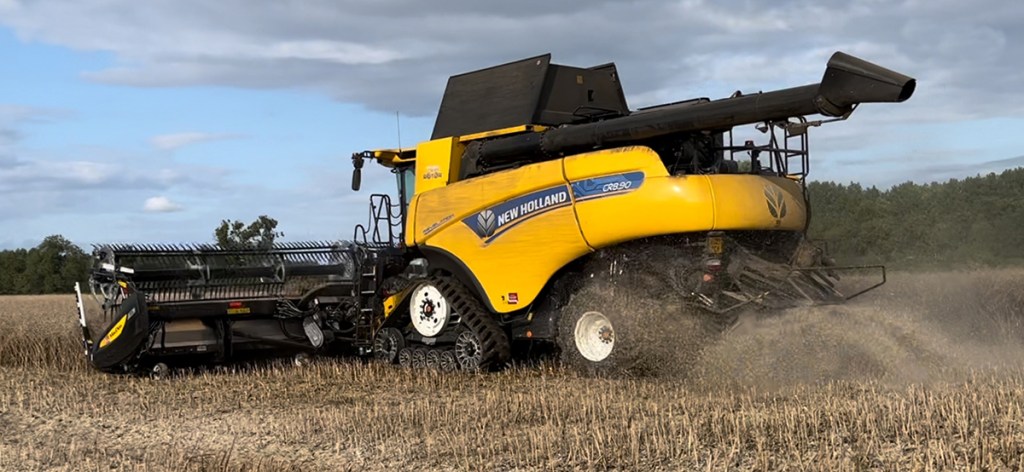
“The CR 8.90’s a straightforward machine, easier to keep clean, less moving parts and servicing and competitively priced,” says the farm manager. “I was concerned that the tracks aren’t suspended but there’s not that much difference.”
The 10.5m MacDon header has been a bit of a revelation, he comments. “We can get longer days in wheat and particularly barley as straw doesn’t wrap round the auger and up onto the reel. We have unusual climatic conditions: at the start of the harvesting day it gets ‘dummel’, where moisture increases and straw starts to bend. But if rain is ahead, there’s usually no dew, so we can keep going for longer.”
It can also be used closer to the ground, he adds: “The header flexes so you can get low or brackled crops and can be used in a positive or negative arc; you can also pitch it forward from the cab. This is helpful when it’s dusty or the sun is in your eyes – you know the header is doing its thing.”
A wider header was considered, but the 10.5m unit gives the ability to downsize the combine if required in future and to work for customers with smaller fields.
Martyn comments that the combine has ‘all the technology you need without being over complicated’, and the approach extends to monitoring the grain store from the cab, using remote access to the Svegma 50t/hr dryer.
“I can set it up for 14% moisture when I start combining then I can increase or decrease the speed and the temperature remotely and then speed it up remotely as the conditions improve. Chris does the double checks, but the process is largely automated.” Chris and Kevin weigh every trailer load over the Parkerfarm weighbridge so there is complete transparency.
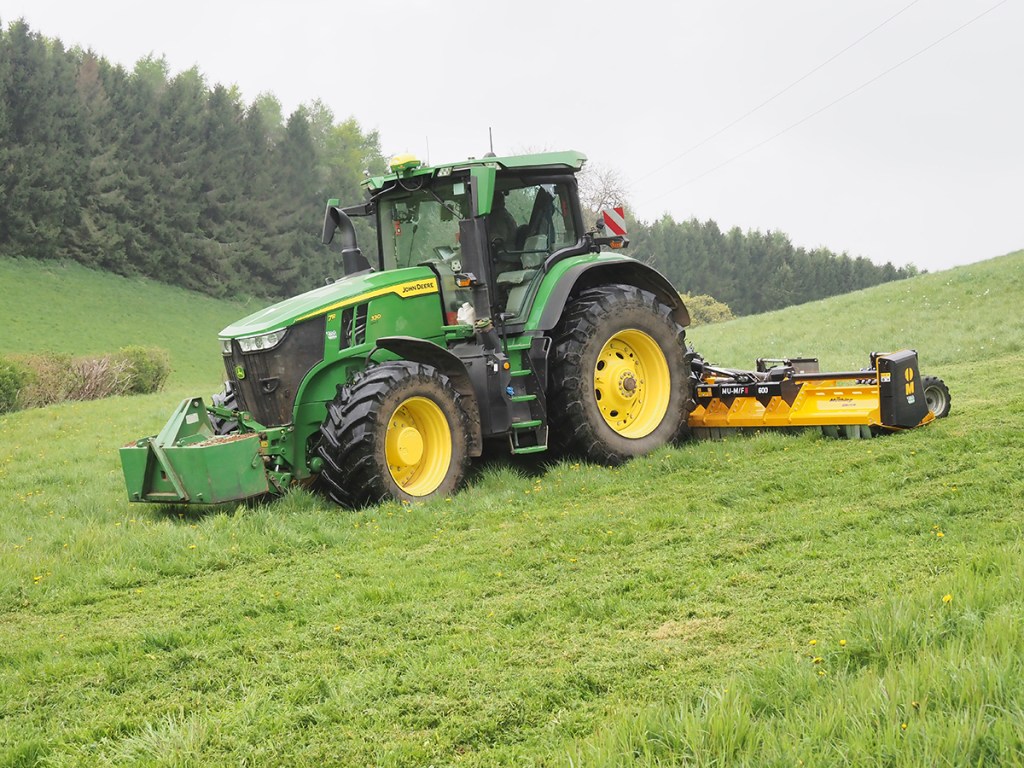
The estate has been loyal to John Deere for 50 years and tractors are mainly owned, but one is kept on contract hire for flexibility. The estate also collaborates with a neighbouring contractor for that business’s silage work, supplying Ben and his tractor for the triple mowers.
“Similarly, we benefit from their contract maize drilling service. With the cost of the kit escalating these days makes sense for us to help each other out. It’s all part of our ongoing plan to keep the farming business profitable and sustainable so that it’s there for the next generation,” Martyn says.
Jane Carley
For more up-to-date farming news click here and subscribe now to profi and save.

